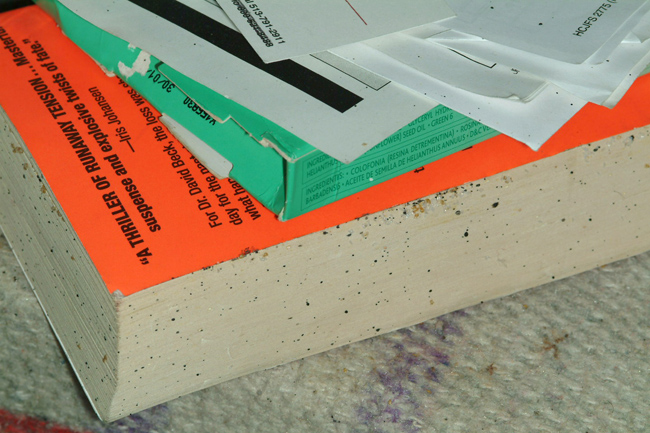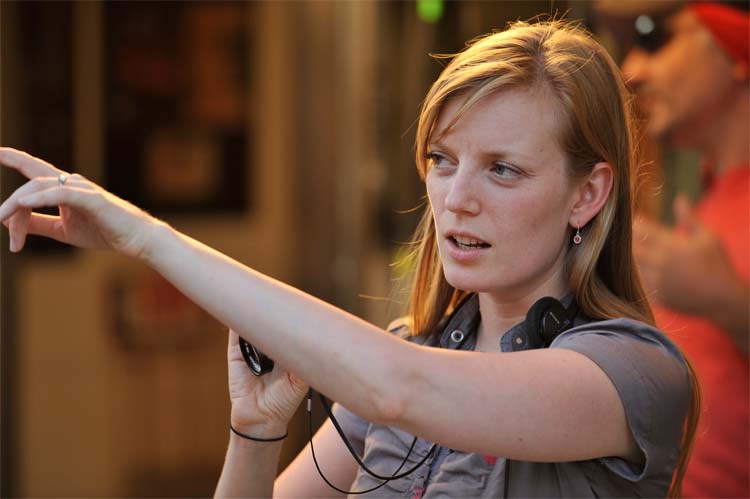Two weeks ago, we revealed how a New York Times story relied on fear and misinformation to spread needless hysteria about bedbugs in public libraries. We spoke with many of the sources that reporter Catherine Saint Louis had relied on, including entomology professor Michael Potter, and discovered that the odds of getting a bedbug from a book in a library were “so low that it’s not even worth talking about.” Professor Potter was kind enough to provide us with a report which revealed that while bedbug incidents have increased holistically, the threat they pose to public libraries is well behind hotels, motels, college dorms, nursing homes, office buildings, public transportation, and movie theaters.
Yet in the past week, Saint Louis’s irresponsible reporting has inspired Canadian news outlets to engage in crass sensationalism. On December 13th, CBC News claimed that bedbugs were infesting multiple branches of the Vancouver Public Library. But the story relied upon hearsay from library patron Gail Meredith, who conveyed to the CBC that “the pest control people came to the conclusion that the only thing that was going on in my life that was likely to bring them in is my library books.” The article doesn’t confirm this with the pest control people, nor does it attempt to corroborate this incident with the VPL. (Robert Zimmerman, the only reporter listed in the article, did not reply to our request for comment.)
Reluctant Habits made several efforts to contact the Vancouver Public Library to determine the details of the 41 bedbug incidents cited by CBC News. There were phone calls and emails with VPL spokesman Stephen Barrington, who claimed that he was “between meetings.” By Friday morning, Barrington had fled his office for the rest of the year, as hard-working Canadians are wont to do. A helpful VPL employee named James Gemmill passed along a message to VPL chief librarian Sandra Singh. As of Friday afternoon, Reluctant Habits has not heard back from the VPL.
Fortunately, there were more explicit details from Toronto.
On Wednesday, the Toronto Star waded into these murky alarmist waters. Star photographer David Cooper claimed that his wife Peggi-jean had discovered three bedbugs in a checked out copy of Peter Robinson’s Watching the Dark. But Reluctant Habits has learned that the Coopers preferred breaking an attention-grabbing story to one of their employers rather than resolving their problem directly with the library. According to Toronto Public Library spokesperson Ana-Maria Critchley, the Coopers went straight to the Star rather than the Toronto Public Library.
“I’m not even sure if she returned the book,” said Critchley by telephone on Friday morning.
Critchley confirmed that the Toronto Public Library has indeed experienced its share of bedbug problems. In the past twelve months, there have been 24 bedbug incidents in thirteen branches. But the Star‘s Alyshah Hasham fudged the facts to fill in the sensationalist sudoku. Aside from the fact that these 24 bedbug incidents in the past year represented a drop from 30 incidents during the preceding year, it’s worth pointing out that thirteen of these incidents originated from chairs. The remaining eleven were located in books. This slight majority towards furniture is not the even split that Hasham claims it is. Additionally, the Star undercounted the items borrowed by Toronto Public Library patrons. I confirmed with Critchley by telephone and email that 33 million items were borrowed last year, not the 31 million claimed by Hasham.
With only eleven reported incidents in 33 million books, your chance of getting a bedbug from an item checked out from the Toronto Public Library is 1 in 3,000,000. According to the National Weather Service, you stand a better chance of being struck by lightning three times during any given year. According to the National Safety Council, you are more likely to die from a dog attack, a flood, contact from hornets, wasps, and bees, a legal execution, or a fireworks discharge, or a flood.
I was able to reach Hasham on her cell phone on Friday afternoon to give her an opportunity to respond to this story. She told me that she could say nothing on the record until she had cleared it with her superiors. I also asked her how any person calling herself a journalist could spread alarmism like this, misrepresenting a minor problem. She responded off the record. I told her that she was doing tabloid journalism, not real journalism.
I left a voicemail with New York Times public editor Margaret Sullivan on Friday morning to see if she could remark upon publishing a news story predicated upon a vastly overstated issue. Surely the Times bears some responsibility for inspiring other news outlets to generate attention over an overwrought problem. Much as Sullivan rebuffed my emails and my tweets, she did not return my call. She has, in fact, refused to address Saint Louis’s story. And while Sullivan and Saint Louis continue to remain silent about the Times‘s reportorial incompetence, other outlets continue to take their cues. Because a good yarn playing on a readership’s fears is more important than being accurate.
“I hear stories all the time about bedbugs in libraries,” said Jody Gangloff-Kaufmann by telephone on Friday morning. The entomology professor at Cornell had been quoted in the Star story. I asked Gangloff-Kaufmann if we could ever know from the Star story just how the Coopers contracted the bedbugs in Toronto.
“I don’t think we know,” she said. “I don’t know what his daily life is like. I don’t know what his neighbor does.”
Gangloff-Kaufmann said that it was likely that the Coopers’ bedbugs came to their home through the book, but pointed out that bedbugs are more likely to be found in furniture. “That goes for any place.”
When I asked Gangloff-Kaufmann if she felt that the recent spate of bedbug stories were founded on hysteria or misinformation, she didn’t wish to answer. But she did concede that the risk of contracting bedbugs from a library was out of proportion with certain responses.
“What is the risk? Fairly low. But the tolerance is zero.”
12/22 UPDATE: I asked entomologist Michael Potter for his thoughts on how bedbugs might have found their way into books in Toronto and Vancouver libraries. He informed me that there was a slight possibility of bedbugs congregating and laying eggs in the bindings and edges of hardcovers and paperbacks.
“If you had a heavily infested dwelling,” says Potter, “there’s always the likelihood that, with time, some bugs could move from former hiding sites and begin residing in books. How often this happens with books taken out from the library is anybody’s guess — infrequently for sure, although it can happen — just as you can pick up a stray bug here and there in any number of other activities.”
Potter told me that if books are situated near a permanent infestation (such as a nightstand next to a bed), the odds, despite being exceptionally minute, do increase. But he reports that worrying about contracting bugs from the library is “certainly no more than obsessing over picking them up from the dry cleaner, cozy upholstered booth of your favorite restaurant, taxi cab or bus seat, or your kids coming home from school for the holidays.”
He was kind enough to provide the following picture, showing books that were permanently stored in a heavily infested apartment:
“For people who remain concerned about the prospects of bed bugs being transported into their homes on library books,” says Potter, “they can do a quick spot check for signs of the little black fecal spots. Do I do this when I check out books? No. Nor do I go to the trouble of storing my suitcase in the bathtub when I stay in hotels, opting instead for a cursory inspection of the bed and headboard area.”




